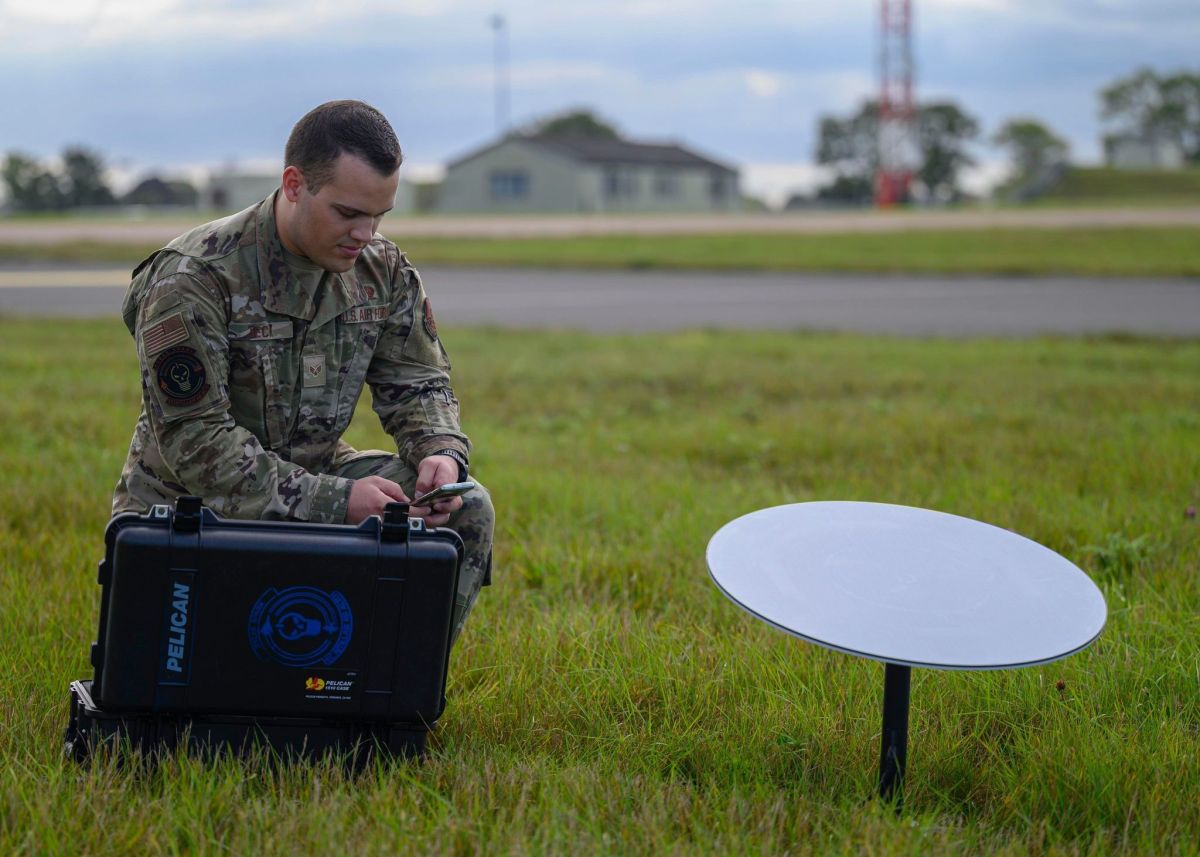ARLINGTON, Va. — In a stark illustration of how rapidly the satellite communications landscape is shifting toward large constellations of smaller satellites in low-Earth orbit, the Defense Department plans to add more than 100 of SpaceX’s Starshield satellites to its future satcom architecture.
Starshield is a militarized version of SpaceX’s Starlink internet satellites, with enhanced encryption and other security features. And unlike Starlink, which is a commercial service, the Starshield satellites would be owned and controlled by the U.S. government.
Col. Eric Felt, director of space architecture at the office of the assistant secretary of the Air Force for space acquisition and integration, said the plan is to acquire a constellation of Starshield satellites by 2029, contingent upon receiving the necessary funding appropriations from Congress.
Speaking at SAE Media Group’s Milsatcom USA conference on June 10, Felt noted that the military has been an avid consumer of SpaceX’s commercial Starlink services, but also wants to take advantage of the company’s dedicated Starshield product line and procure a government-owned constellation. In a briefing slide presented at the conference, titled “Satcom 2029,” Felt showed the DoD’s notional future satcom architecture including more than 100 Starshield satellites.
‘PLEO has arrived’
Felt said the disruptive nature of Starlink and LEO satellite internet became obvious from a very personal source — his daughter serving in the U.S. Coast Guard.
“I knew PLEO had arrived when my daughter said to me: ‘Dad, have you ever heard of this thing called Starlink? We just got it on our ship. And it’s absolutely amazing. We can finally have great bandwidth when we’re out in the ocean,’” Felt recounted.
For non-specialized personnel operating in remote environments, user-friendly Starlink terminals have opened up connectivity in ways previously unimaginable, he said.
While thrilled by Starlink’s capabilities for U.S. forces, Felt cited concerns about the cybersecurity of satellite systems writ large, which led to the current plan to procure Starshield satellites.
Resiliency in numbers
A key advantage of the Starshield architecture is its proliferated nature, with a large number of relatively small satellites able to provide global communications coverage. This design offers significant resiliency compared to the traditional paradigm of a few large geostationary satellites that are expected to be targeted by enemies in a conflict.
Felt said DoD wants to diversify its LEO architecture not just by adding more Starshield satellites but also new commercial services that have yet to enter the market like Amazon’s Project Kuiper.
“We still have to figure out how we best embrace PLEO,” Felt said. “Do we buy it as a service? Do we double down on the Starshield government owned architecture? There’s various different ways that we can embrace proliferated LEO, but it’s absolutely essential that we do.”
Demand for Starlink
The demand for SpaceX’s satellite internet service has grown significantly across DoD, according to Clare Hopper, head of the Space Force’s Commercial Satellite Communications Office (CSCO).
“We are burning through our procurement contract ceiling really quickly,” Hopper said, referring to the $900 million, 10-year IDIQ agreement for proliferated LEO satellite services her office and the Defense Information Systems Agency (DISA) established just a year ago with 20 vendors including SpaceX.
“In fact, by this time next year, we expect $500 million of that ceiling to be consumed,” she said at the Milsatcom USA conference. “So we are working with DISA right now to increase that ceiling well into the billions. We do view this contract as being a workhorse, and the demand for it is off the charts.”
The satellite internet service Hopper’s office procures today from SpaceX is currently branded as Starshield although it utilizes SpaceX’s commercial Starlink satellite constellation, and not a dedicated military Starshield system. “All of our users are on the commercial Starlink constellation,” Hopper explained. DoD has “unique service plans that contain privileged capabilities and features that are not available commercially.”
She noted the flat-panel user terminals that CSCO purchases from SpaceX are designed to be compatible with commercial Starlink and government-owned Starshield satellites. “The terminal is capable of roaming on the Starlink and the Starshield constellation,” Hopper said.
Hopper said DoD users today don’t have access to Starshield satellites which are owned by another government agency, but did not specify which one.
According to several sources, the details of DoD’s procurement of Starshield communications satellites have yet to be worked out after funding is approved. SpaceX is supplying Starshield satellites with imaging payloads to the National Reconnaissance Office for a proliferated LEO constellation of surveillance satellites. DoD’s Starshield satellites would be for communications, not for imaging.
An NRO spokesperson in a statement said the agency “does not discuss the companies associated with the building of our systems or our contractual relationships with them.” The NRO is an intelligence agency but also a defense agency that reports to the Secretary of Defense and the Director of National Intelligence.
